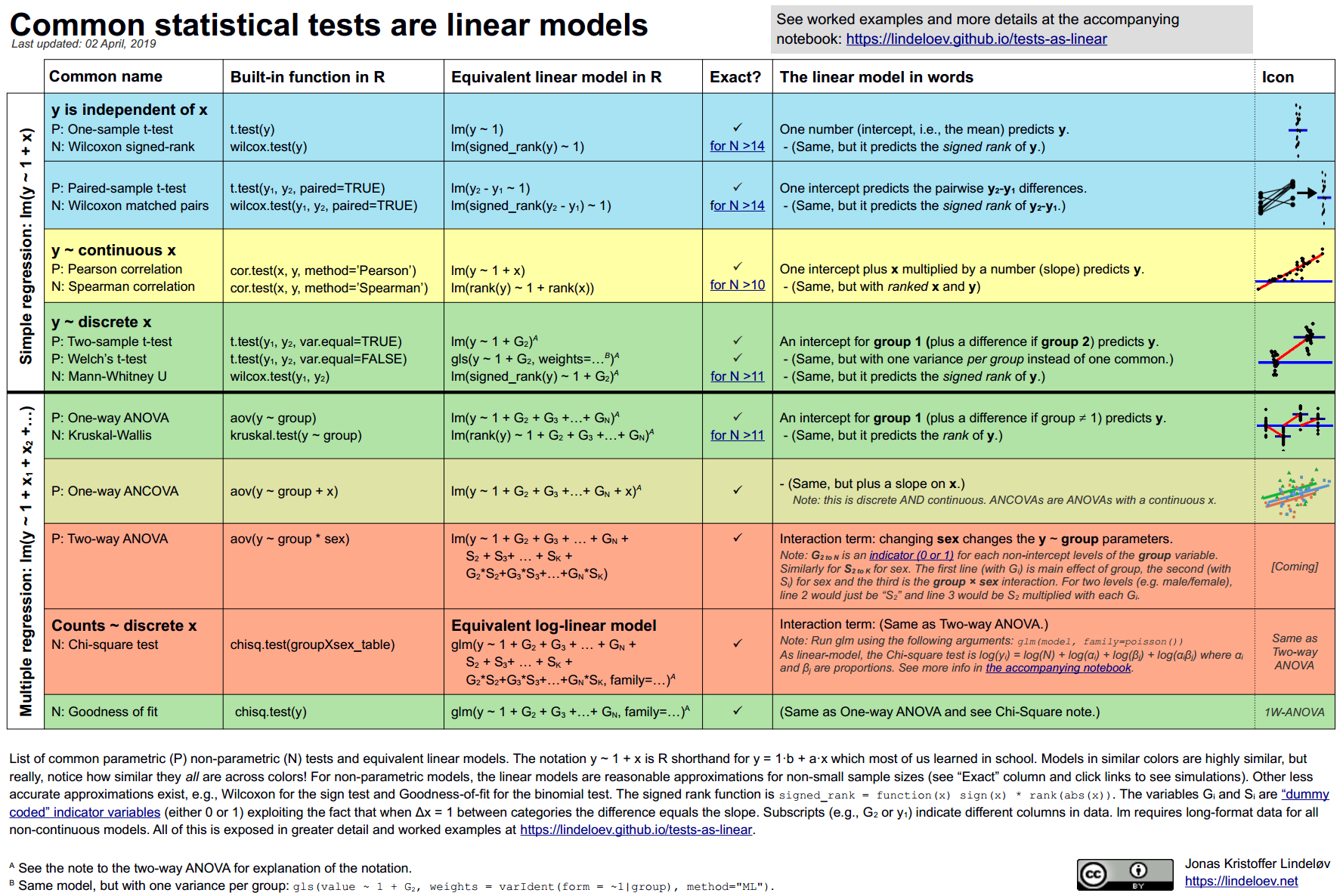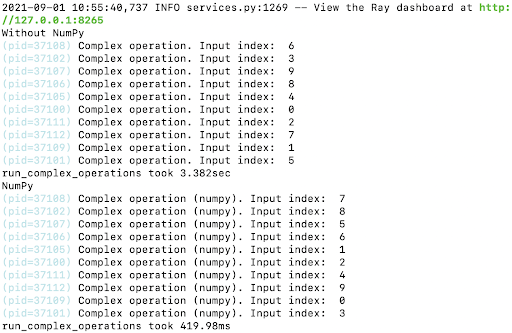
Common statistical tests are linear models (or: how to teach stats)
By Jonas Kristoffer Lindeløv (blog, profile). Last updated: 28 June, 2019 (See changelog). Check out the Python version and the Twitter summary.
This document is summarised in the table below. It shows the linear models underlying common parametric and “non-parametric” tests. Formulating all the tests in the same language highlights the many similarities between them. Get it as an image or as a PDF.
Most of the common statistical models (t-test, correlation, ANOVA; chi-square, etc.) are special cases of linear models or a very close approximation. This beautiful simplicity means that there is less to learn. In particular, it all comes down to \(y = a \cdot x + b\) which most students know from highschool. Unfortunately, stats intro courses are usually taught as if each test is an independent tool, needlessly making life more complicated for students and teachers alike.
This needless complexity multiplies when students try to rote learn the parametric assumptions underlying each test separately rather than deducing them from the linear model.













/cdn.vox-cdn.com/uploads/chorus_asset/file/24987916/Mark_Zuckerberg_Meta_AI_assistant.jpg)




